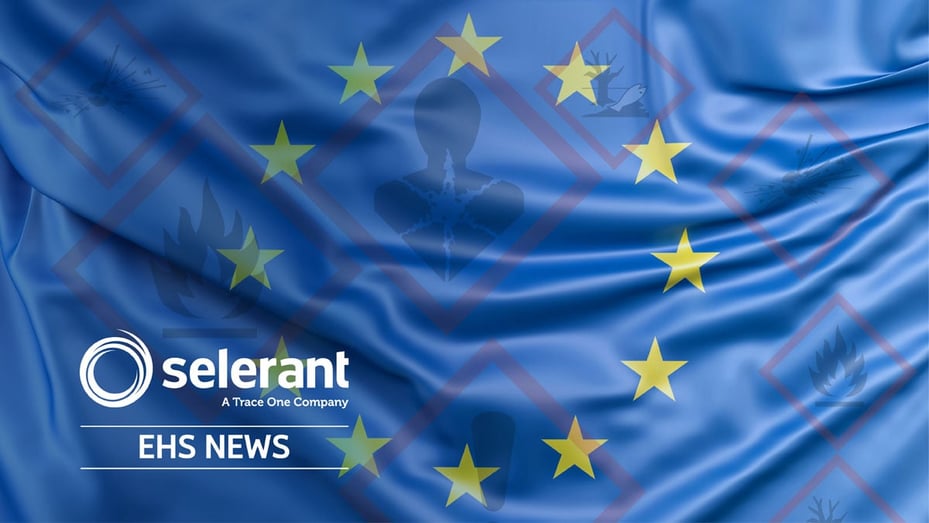
Europe: The Delegated Regulation 2023/707 has been published
|
Regulatory
|
Blogs
|
Environmental Health & Safety
Posted By:
Trace One
The CLP Regulation
The objectives of Reg. 1272/2008 (CLP) are to ensure both a high level of protection of human health and the environment and preserving the free movement of substances and mixtures. While the European Union has overall achieved these goals by constantly revising and adapting to the technical progress the CLP Regulation, certain weakness have been identified.
Following the consultation regarding the existing gaps in the communication of certain properties of the human health and the environment currently provided by the Reg. 1272/2008, last March 31st 2023 a new revision of the CLP Regulation has been published in the form of the Delegated Regulation 2023/707.
The Delegated Regulation: what’s new?
The list of classifications provided in the CLP Regulation has been expanded by the Delegated Regulation by adding the following four hazard classifications:
- Endocrine disruption for human health
Comprised of two categories, its class/category codes will be “ED HH 1” and “ED HH 2”
- Endocrine disruption for the environment
Also comprised of two categories, its class/category codes will be “ED ENV 1” and “ED ENV 2”
- Persistent, Bioaccumulative and Toxic or Very Persistent, Very Bioaccumulative properties
This classification is composed of two distinct properties, and their class/category codes will be “PBT” and “vPvB”
- Persistent, Mobile and Toxic or Very Persistent, Very Mobile properties
Similarly to “PBT” and “vPvB”, this classification is composed of the two properties coded with “PMT” and “vPvM”
The Delegated Regulation also defines the set of label elements related to these new four hazard classifications, among which we highlight the following new hazard statements:
- EUH 380: “May cause endocrine disruption in humans” (for ED HH 1)
- EUH 381: “Suspected of causing endocrine disruption in humans” (for ED HH 2)
- EUH 430: “May cause endocrine disruption in the environment” (for ED ENV 1)
- EUH 431: “Suspected of causing endocrine disruption in the environment” (for ED ENV 2)
- EUH 440: “Accumulates in the environment and living organisms including in humans” (for PBT)
- EUH 441: “Strongly accumulates in the environment and living organisms including in humans” (for vPvB)
- EUH 450: “Can cause long-lasting and diffuse contamination of water resources” (for PMT)
- EUH 451: “Can cause very long-lasting and diffuse contamination of water resources” (for vPvM)
The Delegated Regulation: when?
To ensure that suppliers of substances and mixtures have time to adapt to the new classification and labelling requirements, the Delegated Regulation provides the following application dates for substances and mixtures:
- Substances can be classified and labelled without considering the Delegated Reg. 2023/707 up until May 1st 2025 (or November 1st 2026 if already placed on the market)
- Mixtures can be classified and labelled without considering the Delegated Reg. 2023/707 up until May 1st 2026 (or May 1st 2028 if already placed on the market)
After the related application date, substances and mixtures must be classified and labelled according to the Delegated Regulation.
Trace One has planned a regulatory analysis of this topic, and will keep you updated on it.
For more information regarding the Delegated Regulation, please consult the following link: